Keywords
|
| Microstrip Slotted Patch Antenna (MSPA), Defected Ground Structure (DGS), Network Analyzer (NA) |
INTRODUCTION
|
| Microstrip patch antenna has been studied extensively over the past years because of its low profile, light weight, low cost and easy fabrication. They are extremely compatible for embedded antennas in handheld portable wireless devices such as cellular phones, pagers etc. These low profile antennas are also useful in aircraft, satellite and missile application, where size, weight, cost, ease of installation and aerodynamic profile are strict constraint. But microstrip patch antenna suffers from drawbacks like narrow bandwidth and low gain. While using microstrip patch antenna the other problems which will occurs are high loss and surface wave in substrate layer, as the losses will always occurs in radiation as the antenna is transmitting the signals. Due to surface wave radiation excitation losses occur that will cause decrease in the antenna efficiency, gain and bandwidth because the surface wave occurs, it extract total available power for radiation to space wave [1]. |
| So there have been new technology to overcome that entire drawbacks; one of the technique is DGS [2].In DGS, there is an introduction of shape on ground plane that will etched on the ground plane thus will disturb the shielded current distribution depending upon the shape and dimension of the defect. Due to this defect shielded current distribution will influence the input impedance and current flow of the antenna. The excitation and electromagnetic propagation through the substrate layer can also be control by DGS. Microstrip antenna with DGS will improved return loss, VSWR and provides higher bandwidth overcoming the limitations of conventional microstrip patch antenna. DGS can be integrated onto the ground plane of such an antenna in order to improve the radiation [6], besides not requiring additional circuit for implementation. DGS is basically used in microstrip patch antenna design for different application such as antenna size reduction; return loss improvement, radiation efficiency and bandwidth etc. DGS are widely used in microwave devices to provide compactness and effectiveness [3-5].In this paper a MSPA with two square shape DGS is designed at frequency 2.65 GHz. |
LITEARTURE SURVEY
|
| As far as the microstrip patch antenna with DGS technology concern there was very much research had been done. As mention in references an authors used the DGS technique to enhance the bandwidth, return loss and achieve the compactness of the antenna. The shape of DGS may be different and location is also different which gives the best results. The shapes which are used by the different authors like c-shape, swastika, H-shape, I-shape etc. at different location and test the results. So therefore the common conclusion from that with the DGS technique used there will be enhancement in bandwidth, return loss and compactness is achieved. The increased bandwidth can be used for wireless transmission like Bluetooth or Wi-max. So referring the different papers I will choose to work on DGS technology and experimenting the different shapes and location of DGS to get the better results. |
ANTENNA DESIGN
|
| The MSPA because of its small size, low profile and low cost is finding increasing application in commercial sectors of the industry [1]. The basic structure of rectangular microstrip patch antenna as shown in Fig.1 |
| The most use of this antenna is such as mobile communication, global positioning system and wireless communication. It is presented here a MSPA with DGS useful for highly efficient antenna system having a low return loss at 2.65 GHz when embedded with DGS.Antenna design is carried out by CST software in given design experiment the design of substrate is only carried out by a designing frequency in this antenna designing frequency is 2.66 GHz, thickness of the substrate chosen is 1.6 mm and dielectric constant of the substrate material is 4.3, So the chosen material is FR-4 lossy can be loaded from CST software library. The width, length and other parameter of patch can be found out by design equation given by reference book of patch antenna [1]. |
| Rectangular shape is most commonly used configuration for the patch antenna because it is easy to analyze using both transmission line model and cavity model which are most accurate for thin substrates. The inset feed [7] used for excitation of an antenna is positioned such that it results in a good impedance matching Fig.2 shows the top view of rectangular patch antenna. The final design of simple MSPA with simulation by CST software at 2.66 GHz is shown in Fig.2 |
PROPOSED ANTENNA DESIGN
|
| A square shaped two slot as shown in Fig.3 is cut in ground plane of reference MSPA to improve its characteristics. So the proposed antenna consists of a rectangular patch on upper plane and etched square shaped DGS structure on the ground plane. DGS acts as a LC resonator circuit, The DGS shape defect etched in the ground plane of the microstrip can give rise to increase in the effective capacitance due to this reason antenna characteristics are modified accordingly[8]. |
SIMULATED RESULTS
|
| The antenna performance of MSPA without DGS has been investigated. The simulation results of both antennas are shown in Fig.4.The MSPA (without DGS) resonates at frequency 2.66 GHz and return loss is –13.94 dB as shown by red line in Fig.4. The Return Loss for antenna with DGS is -39.25 dB as shown by green line in Fig.4. At resonant frequency 2.65GHz.That means it is clear that with DGS there will be enhancement of return loss from -13.94 dB to -39.25 dB. Also from Fig.4 efficiency will enhance from 79.91% to 98.91%. |
| Simulated results of VSWR (both the antennas) are shown in Fig.5.The result of VSWR of the antenna without DGS is shown by red line which is 1.50 and VSWR of the antenna with DGS is shown by green line which is 1.02.So from Fig.5 it is clear that with DGS VSWR of antenna will be improve.The bandwidth can be calculated from the return loss (RL) plot. Thebandwidth of the antenna can be said to be those range of frequencies over which the RL is greaterthan - 10 dB (-10 dB corresponds to a VSWR of 2 which is an acceptable figure). |
| So from Fig.5 the bandwidth of antenna without DGS is found approximately 44.6 MHz and with DGS which is found approximately 90.8 MHz.So from Fig.5 with incorporating the DGS the bandwidth of antenna will improve from 44.6 MHz to 90.8 MHz. |
PRACTICAL RESULTS
|
| The practical design of MSPA, the setup for measurement of antenna parameter withDGS is shown in Fig.6 |
| Like S- Parameter, VSWR, Smith Chart and by using the markers approximate bandwidth can be calculated. The practical values of antenna obtain are shown in table given below. The practical results are not match with the simulated results because may be the connector used for antenna is made bybronze not from goldand another reason may be that while taking the reading antenna is not covered by aluminium box. |
CONCLUSION
|
| It is shown in this paper that MSPA with two square shape DGS found very suitable for highly efficient antenna design in particular frequency. The square shape DGS integrated antenna has improved impedance matching of reference antenna with better return loss of -39.25 dB from -13.94 dB, radiation efficiency enhancement of 98.91% from 79.91% and compactness is also achieved in proposed square shaped DGS antenna as compared to conventional antenna. Design of MSPA with DGS will improve the bandwidth of reference antenna from 44.6 MHz to 90.8 MHz. So this increased bandwidth up to 90.8 MHz can be use this antenna for Wi-Max (lower band) application.A further work focusing on the effect of the DGS position and various shapes of DGSs which will increases more bandwidth. It may possible by varying the width and length of patch with suitable position of DGS and resonate the antenna at 2.4 GHz can be used as for Bluetooth application. |
Tables at a glance
|
 |
| Table 1 |
|
Figures at a glance
|
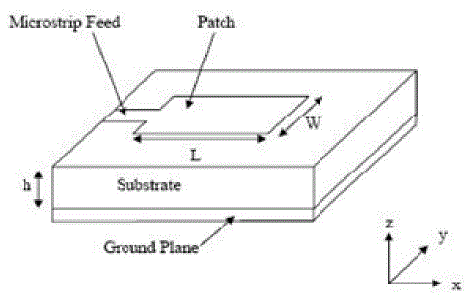 |
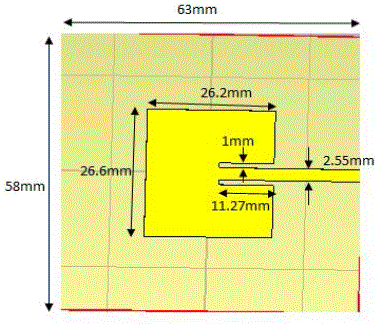 |
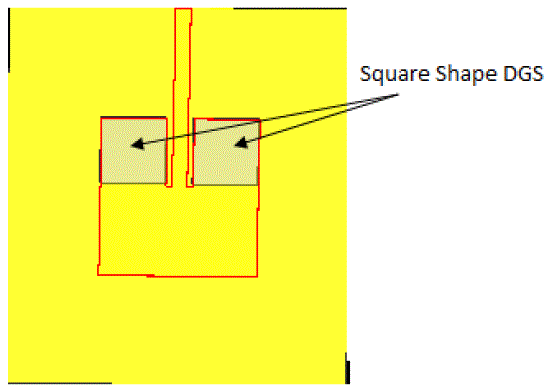 |
| Figure 1 |
Figure 2 |
Figure 3 |
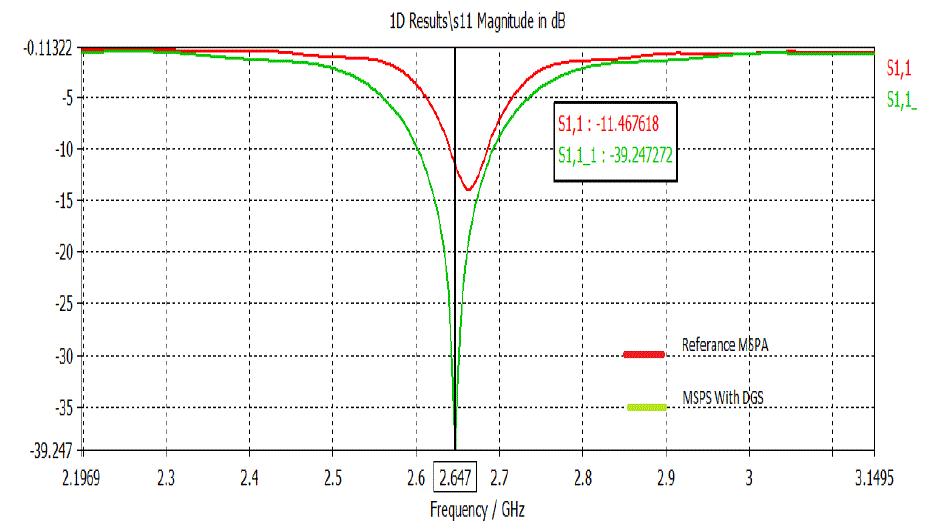 |
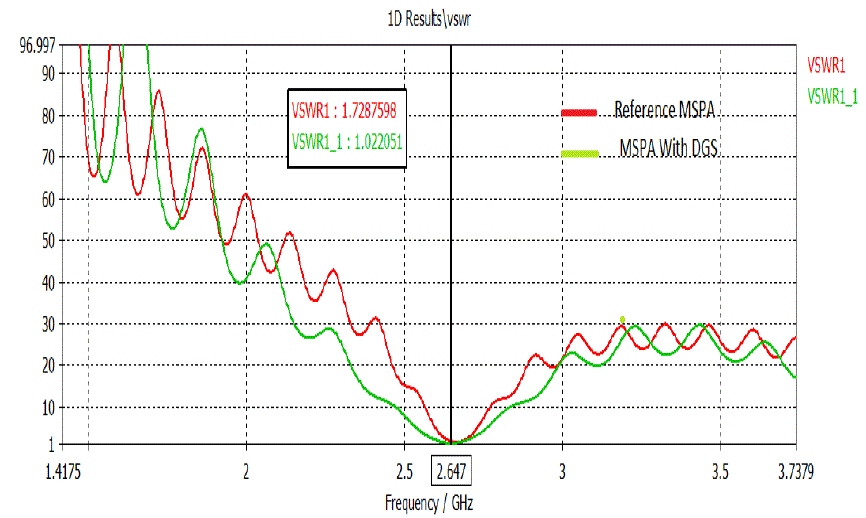 |
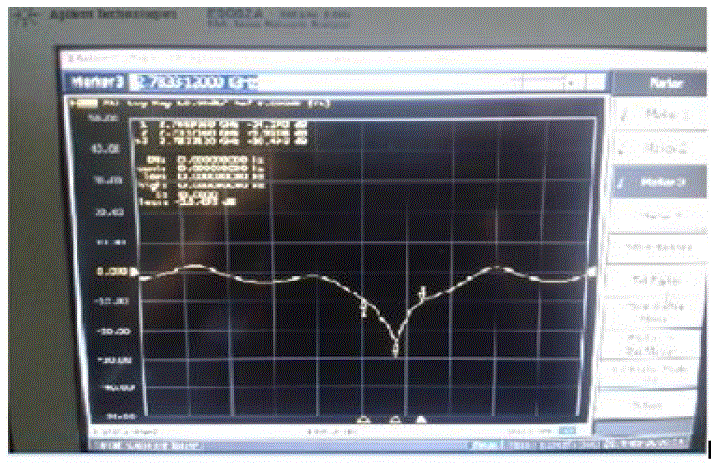 |
| Figure 4 |
Figure 5 |
Figure 6 |
|
References
|
- Alipio BC, David FC, Isabel RS, Juan CNM. Manuel AE. Comparison of batch, stirred flow chamber, and column experiments to study adsorption, Desorption and transport of carbofuran within two acidic soils. Chemosphere. 2012; 88(1): 106-120.
- Arnaud B, Richard C, Michel S. A comparison of five pesticides adsorption and Desorption processes in thirteen contrasting field soils. Chemosphere. 2005; 61(5): 668-676.
- Chunxian W, Jin-Jun W, Su-Zhi Z, Zhong-Ming Z. Adsorption and Desorption of Methiopyrsulfuron in Soils. Pedosphere. 2011; 21(3): 380-388.
- Chunxian W, Suzhi Z, Guo N, Zhongming Z, Jinjun W. Adsorption and Desorption of herbicide monosulfuron-ester in Chinese soils. J Environ Sci. 2011; 23(9): 1524-1532.
- Christine MFB, Josette MF. Adsorption-desorption and leaching of phenylurea herbicides on soils. Talanta. 1996; 43(10): 1793-1802.
|